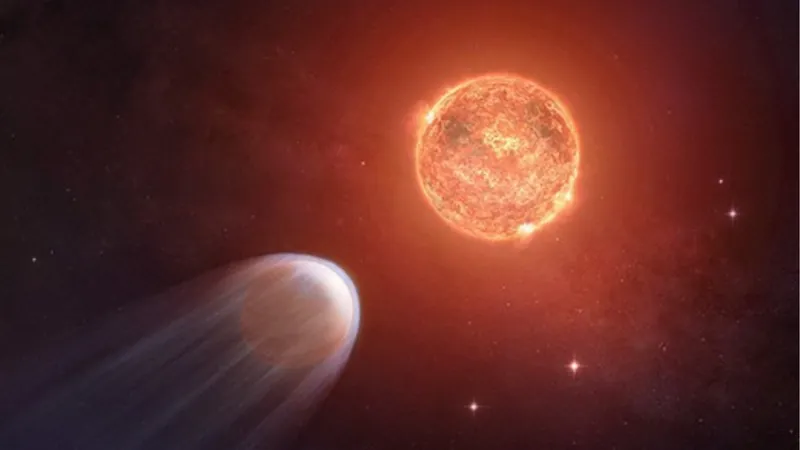
NASA's Chandra Spacecraft Reveals Shrinking Exoplanet: The Grim Future of TOI 1227 b
2025-07-18
Author: John Tan
A Baby Planet Under Siege
Astronomers using NASA's Chandra X-ray Observatory have made a startling discovery: a young exoplanet, TOI 1227 b, is literally shrinking as relentless radiation from its host star bombards it. This Jupiter-sized orb, merely 8 million years old (for context, Earth is about 4.5 billion years old), orbits its star at a dangerously close distance of just 8.2 million miles—far less than the gap between the Sun and Mercury.
Atmosphere Erosion at an Alarming Rate
TOI 1227 b is suffering from extreme X-ray exposure, causing its atmosphere to be stripped away at a rapid pace. According to researchers, within approximately 1 billion years, the planet's atmosphere is expected to vanish completely, leaving behind nothing but a small, barren core.
Loss of Mass Comparable to Two Earths
This cosmic catastrophe will result in TOI 1227 b losing the equivalent mass of two Earths. Currently, it boasts a mass around 17 times that of our planet, but that weight is on borrowed time. Attila Varga, the study’s lead researcher at the Rochester Institute of Technology, expressed disbelief at the extent of the planet’s demise, stating that its atmosphere cannot endure the intense X-ray bombardment.
A Star Unlike Any Other
While TOI 1227's parent star is less massive than our Sun, it is surprisingly brighter in X-ray emissions. Joel Kastner, another team member, noted that understanding the high-energy radiation received by exoplanets is crucial for grasping their evolution. TOI 1227 b’s inflated appearance is largely due to the ongoing barrage of X-rays.
An Alarming Prediction for the Future
Using Chandra’s data, the research team modeled the impact of X-ray radiation, discovering that the exoplanet shed the equivalent of Earth's entire atmosphere roughly every two centuries. Alexander Binks, a researcher at Eberhard Karls University, grimly stated, "The future for this baby planet doesn't look great," predicting it could shrink to around one-tenth of its current size and lose more than 10% of its weight.
Unique Among the Young Exoplanets
TOI 1227 b is distinguished from other young exoplanets, particularly those under 50 million years old, due to its extended orbital period and the low mass of its host star. Researchers used the star's velocity and surface brightness to estimate TOI 1227 b’s age and its unique characteristics.

 Brasil (PT)
Brasil (PT)
 Canada (EN)
Canada (EN)
 Chile (ES)
Chile (ES)
 Česko (CS)
Česko (CS)
 대한민국 (KO)
대한민국 (KO)
 España (ES)
España (ES)
 France (FR)
France (FR)
 Hong Kong (EN)
Hong Kong (EN)
 Italia (IT)
Italia (IT)
 日本 (JA)
日本 (JA)
 Magyarország (HU)
Magyarország (HU)
 Norge (NO)
Norge (NO)
 Polska (PL)
Polska (PL)
 Schweiz (DE)
Schweiz (DE)
 Singapore (EN)
Singapore (EN)
 Sverige (SV)
Sverige (SV)
 Suomi (FI)
Suomi (FI)
 Türkiye (TR)
Türkiye (TR)
 الإمارات العربية المتحدة (AR)
الإمارات العربية المتحدة (AR)